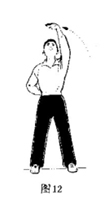

Qigong is an integral part of Chinese medicine, Chinese martial arts and spirituality. Historically, the primary driving force of its development was the search for better health and longevity.
The first type of Qigong taught at Boulder Kung Fu Academy is a “dynamic” kind (see below). Gentle movements blend with mindful and calm breathwork. Accordingly, this promotes the movement of blood and qi (life force energy) throughout our bodies for health and healing. Qigong can help ground us by quieting the mind and bring our awareness back to the present moment – as well as into our bodies.
Qigong can be divided into two categories:
1) Static – This form of qigong is usually practiced standing, sitting or lying down. The practitioner learns special techniques of breathing and focusing the mind (visualization). When practiced daily, it will promote the practitioner’s circulation and cultivation of qi. When we cultivate qi, we are developing our ability to fight or resist disease by strengthening our bodies internally. The practicioner learns self-healing of the body, mind and spirit. Examples of this type of qigong include dantien breathing, microcosmic orbit and the six healing sounds.
2) Dynamic – This form of qigong is usually practiced in sets of movements and/or massage. Internally, this type of qigong can enhance the spirit, qi, blood, and the mind and body. Externally, it can strengthen muscles, tendons, ligaments and bones. Examples of this type of qigong include the 18 Lohan (shiba luohan) and liangong.
The Boulder Kung Fu Academy offers instruction in a variety of both dynamic and static qigong forms. It is also a part of the regular curriculum at the school as it has been an integral part of Chinese martial arts for centuries. Qigong itself dates back thousands of years in China and was the precursor to martial arts.
